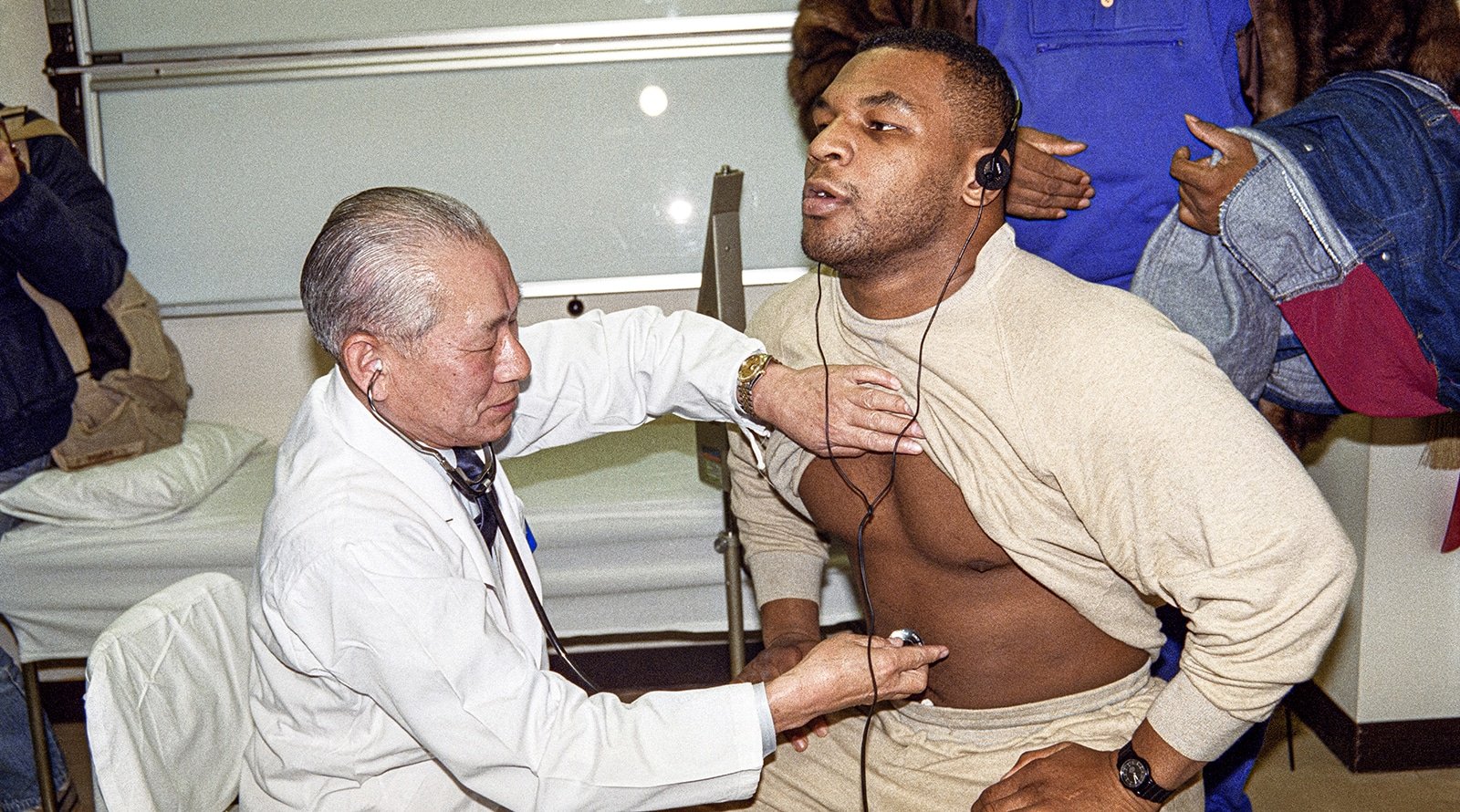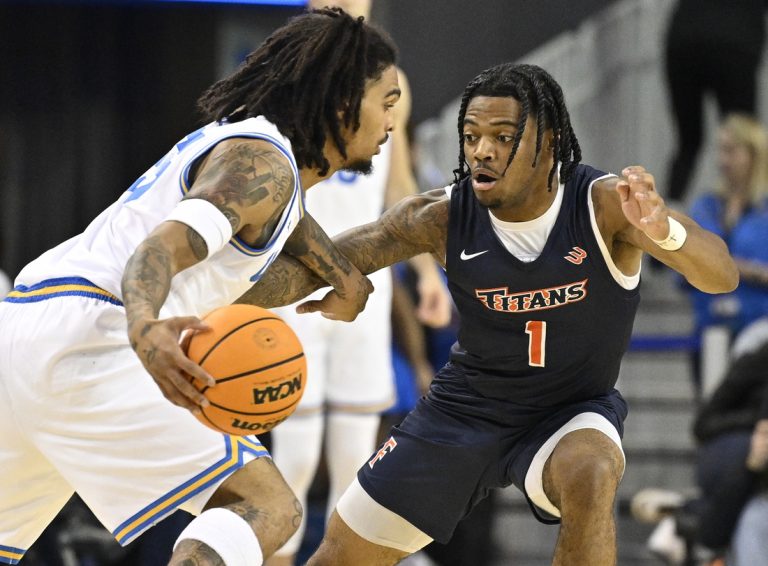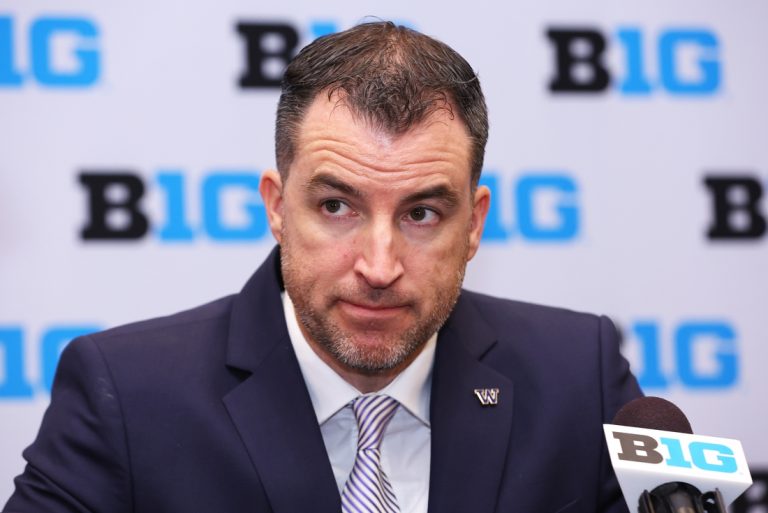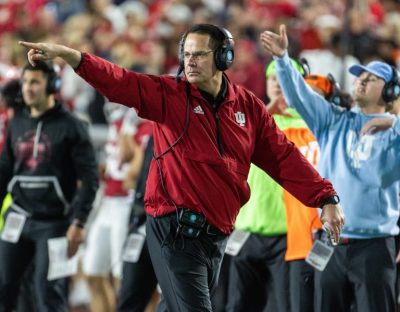Dr Neil Scott, Chief Medical Officer of the British Boxing Board of Control, explains exactly what’s at stake when a 58-year-old Mike Tyson takes on Jake Paul, a man 31 years his junior, this Friday in Texas.
by Rob Tebbutt
BN: Can you please start off by telling us what your role is?
“My day job, I’m an NHS consultant – I’m a maxillofacial and head and neck surgeon. So my daily work revolves around facial trauma, soft tissue/hard tissue reconstruction at the face and neck, and also includes patients with mouth cancer, skin cancer and other significant diseases.
“My other job is working for the British Boxing Board of Control. I’ve been a Medical Officer since 2012, I was the Head Office Medical Advisor since 2017 and, since last year, I’ve been the Chief Medical Officer.”
Could you explain the dangers of boxing, particularly when it comes to head trauma?
“I think I look at it in two ways. You have the present risk of injury in particular, so we categorise that as a Traumatic Brain Injury. In its mildest form, that’s a concussion, which lots of people may have experienced, even in their sports careers as teenagers or as adults, playing rugby, football, amateur boxing etc. You then go on, unfortunately, to the more severe Traumatic Brain Injuries – and they’re the very serious and often sad cases. They’re the ones we’re talking about: the “brain bleeds”. That’s the immediate risk.
“The longer term risk, which we’re becoming more aware of now, not only through boxing, but very much publicised through rugby, football (with the heading of the ball) and in the NFL, is Chronic Traumatic Encephalopathy (CTE). That is different from Traumatic Brain Injury. I put them in two separate columns.
“The Traumatic Brain Injury is caused by ‘it’s there, it’s at that point in time’ – whereas the Chronic Traumatic Encephalopathy is a neurodegenerative disorder, and that happens further down the timeline. That’s with the symptoms where people used to use the phrase – and it’s not a nice phrase to use – but it was used a lot: “Punch Drunk”. That’s a really difficult condition to live with because it’s from the effects of Traumatic Brain Injuries.
“We don’t know in each person how many traumatic brain injuries, how many punches, how many head impacts it requires to get to that point. It’s different for every person, and the only way to truly diagnose it at the moment is post-mortem. So it’s actually having that examination of your brain when you’ve passed on. It’s still very much an open book, Chronic Traumatic Encephalopathy. We’re acutely aware of it at the British Boxing Board of Control.
“We are, I think, ahead of the curve on what we do. We scan, we MRI the brain. Every year, we are doing neuropsychological assessments. With a combination of the MRI scan and neuropsychological assessments, it can give us an indication of change. Changes that are happening structurally within the brain, but also within the function of the brain. It means that we can start to counsel people.
“I do have colleagues that say: ‘Well, you know boxing is intended to hurt another person and cause injury. ‘Why do you like it? Why do you support it? Why do you do what you do?’ Well, I think boxing has so many plusses. What it offers to young children, communities, discipline. Adults that you know, they may have had a totally different path in life. There are many famous boxers that will tell you: ‘If I wasn’t doing this, I’d be off the rails, I’d probably be in prison…’ – so why not make it as safe as you possibly can? You don’t want it going underground and being unregulated, and you have to do as much as you can to educate people about the risks.
“It then has to be, to a certain degree, a personal choice. But at least then, if you [the fighter] make an informed decision with all of the best available information there, you [the doctor] have fulfilled your duty of care as much as you can in that situation.”

“The risks for Tyson are higher than they are for Paul,” says Dr Scott.
Mike Tyson returns to the ring this weekend at 58-years-old to take on Jake Paul, 27, over eight two-minute rounds in Arlington, Texas. A fight that, for a lot of reasons, has raised a lot of eyebrows. As the Chief Medical Officer of the British Boxing Board of Control, your thoughts from a medical perspective on Mike Tyson vs Jake Paul?
“My medical thoughts are broken that down into two areas. I think Mike Tyson, we all know, his first career, as an elite athlete: world class, trained, conditioned. So no doubt he has that elite, baseline level of skill and ability within the ring. He will have trained for this. Undoubtedly, he will be conditioned. But for me, that’s probably where it stops, to be honest – because there are so many other issues that do concern me from a medical standpoint.
“His age is the first point. He’s 58-years-old, so he’s nearly getting into his sixties. Once you get into your forties, we know that you get a degree, not uniformly, throughout the brain, but you do get a degree of cerebral atrophy, so “shrinkage”. So essentially, there is more space within your head, within your skull, for your brain to move. It means it’s more susceptible, whether that be to the linear, straight back and forward trauma or the rotational shearing forces. It’s those kinds of forces, with having more space in the skull for the brain to move around, that are the concern.
“His blood vessels are different now. They haven’t got the elasticity and the robustness that they probably had when he was in his twenties and thirties. They probably have to travel a little bit more distance because of the shrinkage in the brain. And when I say distance, I mean between the brain and the layers around the brain. Then you have the general effects of his lifestyle. We know he went through a period where he wasn’t as active, as fit. He was smoking. So the vessels might be damaged by cholesterol, they might not be as flexible, and that may result in damage to the vessel and bleeding.
“His age is a factor. Physiologically, he’s just not going to be what he was when he was in his twenties or thirties. Yes, he still is probably in very good condition, but his cardiovascular system, his respiratory system won’t respond in the same way [as it used to].
“Yes, two-minute rounds. Okay, that’s some improvement. Yes, it’s eight rounds. So at least it’s not 12. But at the end of the day, he’s fighting a 27-year-old gentleman who, albeit has had a short boxing career, but it would appear, has really given himself to this. You see the training videos. There is no doubt that he [Paul] is a conditioned individual who is obviously very strong and can throw a very, very good punch.
“At the end of the day, the risk factors for Mike Tyson are much higher than they are for Jake Paul. People do say they worry about Jake Paul in this contest. Well, I’ve got to admit, from a medical perspective, I disagree. I worry for Mike Tyson in this contest.”
You mentioned Mike Tyson he hasn’t necessarily “lived the life” at points in his life. He’s been very open about his recreational drug use: cocaine, alcohol etc. He’s still a regular cannabis user. What kind of impact does the use of recreational drugs have on the brain, as well as the ageing process?
“Yeah, I mean the recreational drug use… I’ve got to be honest, that probably doesn’t concern me as much as actually smoking. It’s actually the smoking that concerns me more, because of its effect on the cardiovascular system, the respiratory system, the effect on blood vessels. We know that the blood vessels will be hardened. They won’t react in the same way.
“Recreational drug use has had an effect on his day-to-day function, on his processing speeds, potentially, and also at that age, advancing into your fifties and sixties, naturally, physiological decline happens. So your ability to react, your ability to process things, will naturally slow down, even if you’ve totally lived the life. If you introduce recreational drugs, smoking, cannabis and those things that’s only going to have a further detrimental effect.
“Plus, we know once you approach your sixties (and above) your risk of having a Traumatic Brain Injury increases. We know that from non-boxing studies. We know that when elderly people (or people over sixty) fall, their risk of Traumatic Brain Injury increases, as does their risk of having a complication from that Traumatic Brain Injury. From a medical perspective, for me, it’s concerning.”
We mentioned the eight two-minute rounds. Another thing that’s been pushed to front and centre is the use of 14oz gloves, as opposed to 10oz gloves. Does that make this contest “safer”, in your opinion?
“I think all of those things will help. Do they make it, I mean, it’s difficult to use that word “safe” isn’t it? In boxing, I suppose we try and make it as safe as possible. So yes, they are they are trying to mitigate some risk and yeah, I think that’s good. That’s commendable. But when you really look at the real physiological and chronological things that we’ve spoken about in terms of age and everything else: you can’t get away from it.”
On Jake Paul, you mentioned earlier, he is 27-years-old and has lived the life of a professional, elite athlete for the past five or six years. Do you think people are underrating or undervaluing just how important it is to be in your physical prime, as opposed to in your late fifties?
“Yeah, I do. I think people are underrating that. Jake Paul, you can’t compare him to Mike Tyson in his prime, can you? However, what you can say is that Jake Paul is 27-years-old, he has lived the life (as far as we’re aware) and he has trained, he is conditioned. There are a lot of advantages there for him, purely in that.”
As a fan of the sport, not just from a professional perspective, but your personal opinion about Mike Tyson versus Jake Paul?
“Medically, it’s not something I agree with. Personally, it’s not something that I agree with. It’s not something I’ll be watching. I just hope – I just hope – it goes uneventfully. Most importantly, for the boxers and, I hope, for the medical team there, that they have a very uneventful night.
#worry #Mike #Tyson #contest #British #Boxing #Board #Chief #Medical #Officer












